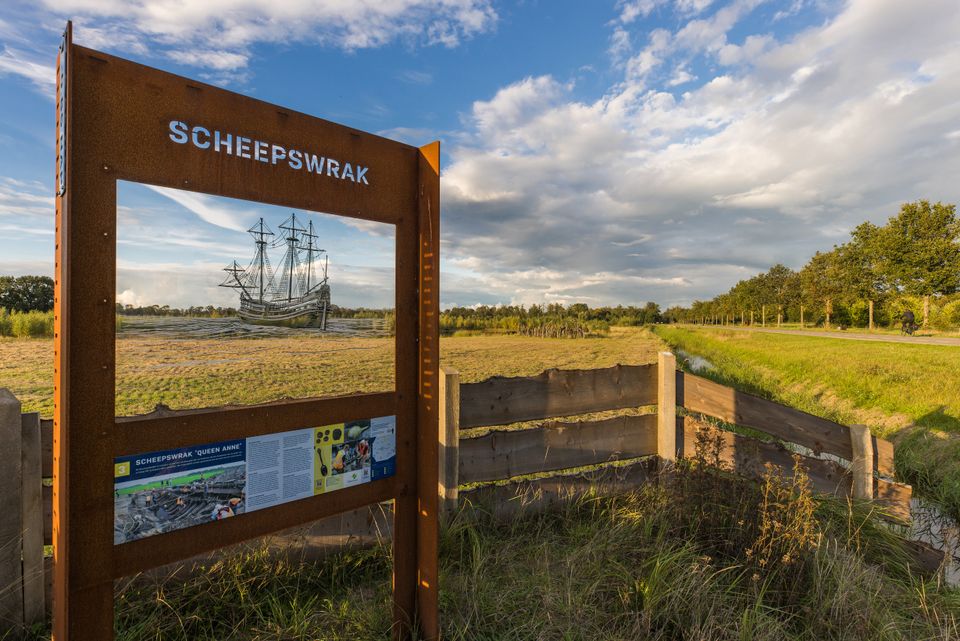
See-through panels are corten steel frames with a transparent plate. On that plate, a drawing visualises an object/activity that is not (or no longer) visible in the landscape. Through the correct perspective of the drawing and the correct positioning of the frame, the drawing is as it were projected into the current landscape. In this way, a special event or a former structure that stood at a specific location can come back to life for a while. Via the vista panels, we make the special history and unique story of Northeast Polder more visible.
When the South Sea still ruled here, ships sail…
See-through panels are corten steel frames with a transparent plate. On that plate, a drawing visualises an object/activity that is not (or no longer) visible in the landscape. Through the correct perspective of the drawing and the correct positioning of the frame, the drawing is as it were projected into the current landscape. In this way, a special event or a former structure that stood at a specific location can come back to life for a while. Via the vista panels, we make the special history and unique story of Northeast Polder more visible.
When the South Sea still ruled here, ships sailed in and out to trade. So did the very likely British merchant ship that was named Queen Anne after the excavation. Indeed, two rare Royal Portrait Spoons from London were found in the shipwreck. The top of the stems clearly shows the left-facing portrait bust of Queen Anne. Anne was the sister of Mary Stuart, wife of the Dutch stadholder and later English king William III (1650-1702). Queen Anne succeeded William III after his death in 1702 and was queen of England and Scotland until 1707 and then queen of Great Britain until her death on 1 August 1714.
Although many more utensils were found, almost nothing remains of the ship itself. This is partly due to the extremely hot weather during the excavation, which caused the keep to dry out completely and pulverise. And money for preservation was sadly lacking. Fortunately, the ship's frames were given a new purpose in the form of a monument on the edge of the Schoterveld nature reserve. The ship's 1.5-metre-high trusses have been dug in some 50 cm and today indicate the contours of this exceptionally large ship for the Zuiderzee in the landscape.
The vista panel shows what the ship probably looked like, floating on the water right next to the position where the remains of the shipwreck lie today.